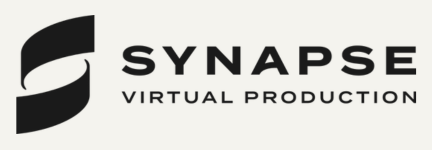
New Innerindex Benchmarks In-House Culture

Above: Fred Schuster, CEO, InnerGroup
Business needs more from marketing, and delivering on it requires a multi-dimensional understanding and approach to in-house performance improvement.
That’s the premise of a new report and framework that benchmarks the pillars of culture within marketing organisations. Called InnerIndex, the research and program come from InnerGroup, which launched recently to bring more holistic support to in-house marketing operations.
Why they did it.
Increasingly, brand growth requires marketing to bring a lot of individual capabilities and departments together – research, product development, logistics, distribution, creative, media, customer management, and the data technology to bring it all to a streamlined production.
Somebody must play synthesizer. That’s the real job of an in-house agency, posits InnerGroup. Businesses maximise impact from marketing when they let their in-house teams integrate the operational drivers that generate performance rather than act just as a tactical communications service bureau.
To do it systematically and predictably, though, requires vision into where there’s room for improvement in the real drivers of operational performance. There hasn’t been a research base to track this.
So, InnerGroup created one.
How it’s different.
The company interviewed 127 in-house leaders on 48 factors, corresponding to eight pillars of internal effectiveness, to create the framework. Importantly, all the pillars include people; so InnerGroup dove into the missing sentiment and uncovered emotional and cultural dynamics that determine in-house potential. Sentiment reveals friction points that management typically can’t see; resolving them improves team alignment dramatically.
By combining head and heart, statistical and contextual, quantitative and qualitative, InnerIndex identifies the real opportunity gaps that businesses can close to increase performance.
“Other studies only measure trends or volume, whereas the InnerIndex applies behavioral science to look at both the emotional and rational sides of an internal organization,” said Fred Schuster, CEO at InnerGroup. “Looking at both sides is the only way to derive clear insights and that can be acted on successfully.”
What it shows.
The integrated perspective reveals several misconceptions that currently limit in-house marketing. The most notable come in talent and technology.
While other surveys have stated talent is scarce, the InnerIndex reveals the issue isn’t skill, it’s role fit. Teams report strong leadership support and creative range, but lower scores on strategic alignment and process integration. Specifically, marketers cite talent as their highest-rated capability (3.67 on a scale of 1 to 5), yet alignment to ambition is among the lowest (3.44) – a sign that the work doesn't match the skill.
“It’s like hiring a bunch of Michelin Star chefs and having them peel potatoes,” said Michael Storey, Global Advisor for InnerGroup. ”This isn’t a hiring crisis - it’s a utilisation failure. The talent is already inside, but it’s being misapplied.”
In technology, InnerIndex shows that ubiquitous martech stacks are inadequate because many of the tools are misaligned with the evolving needs of in-house agencies.
“This isn’t a tech gap, it’s a performance gap,” said Fred. “The systems are in place, but they’re not doing the job. In-house agencies are built on tech stacks, but their real struggle is to extract meaningful value from them.”
InnerIndex data will fuel InnerGroup’s advisory practice, which helps marketers identify and overcome opportunity gaps in critical operations areas. InnerGroup brings insight across marketing organisations (an outside perspective ) and elite experience to bear – to diagnose and resolve tensions that are sapping the power of the marketing engine - in eight critical areas (Inner8) that determine the health of marketing organisations.
InnerIndex also underscores InnerGroup’s founding premise – that improving performance requires operations transformation, and in-house agencies should be the driver of it.
“To be more successful, organisations need to stop treating in-house agencies like service centers and get as surgical about their operations as they are about customer data,” said Fred. “Elevate in-house to be the central hub of your agency roster, and protect it at all costs like you would your customers.”












